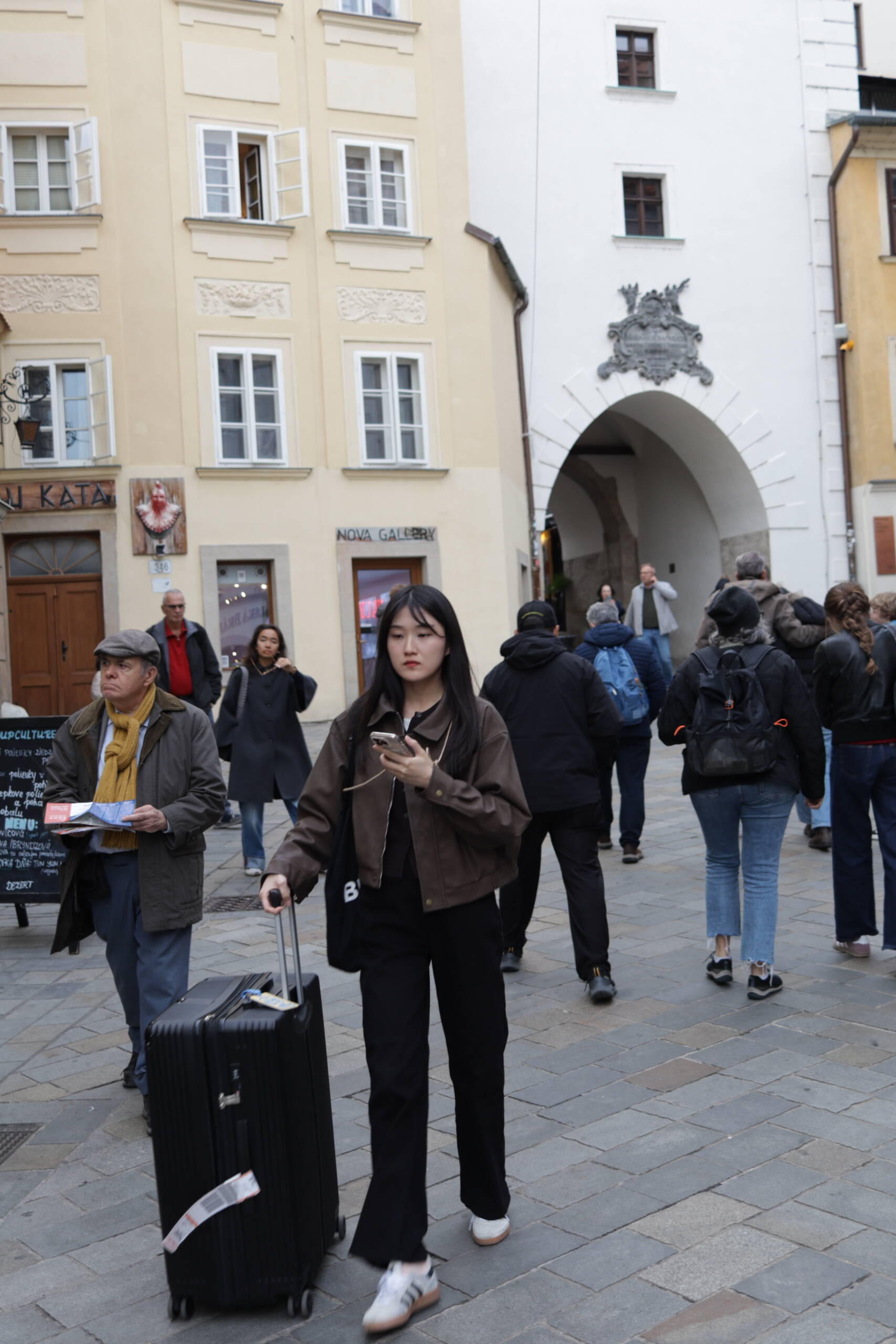There’s something almost cinematic about watching a traveler roll a giant suitcase through cobblestoned streets, trying to juggle a phone, directions, and the reality that the wheel was never designed for uneven stone. The photo captures that all-too-familiar struggle: a young traveler pulling a massive black hard-shell suitcase across a busy square, surrounded by others who either travel lighter or at least look less encumbered. Behind her, a group of backpackers and pedestrians flow easily under the arched gateway, while her progress seems just a little slower, a little more burdened.

The truth is, the time of the oversized suitcase has quietly passed. Airlines have grown stricter, cities more crowded, and stairs—especially the endless ones in old European towns—have not become any more forgiving. A carry-on and a personal bag are more than enough for most trips, even long ones. The trick isn’t packing your whole wardrobe but rethinking the rhythm of travel itself: wash, launder, repeat. If socks, underwear, and basic tees get worn out, buy new ones locally—consider them souvenirs of use, not clutter. The lightness you gain isn’t just physical but psychological; you move like the city’s rhythm, not against it.
Checking in a large suitcase carries risks too often brushed aside. Airlines misplace bags daily, luggage gets broken in transit, and theft is not as rare as we’d like to believe. Beyond the risk, there’s the drag: waiting at the carousel, worrying about connections, and losing time that could be spent wandering side streets or sipping a coffee in a square. The carry-on traveler, by contrast, is already on the tram, halfway to their Airbnb, unbothered by all those little delays.
Travel has shifted. It’s leaner, faster, more fluid. A single bag forces you to travel smarter, to buy with intent, and to realize how little you actually need. The real luxury isn’t packing everything—it’s walking through a city without dragging a miniature trunk behind you.
Leave a Reply